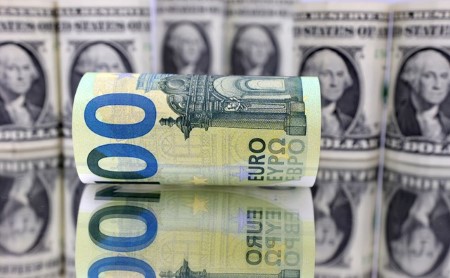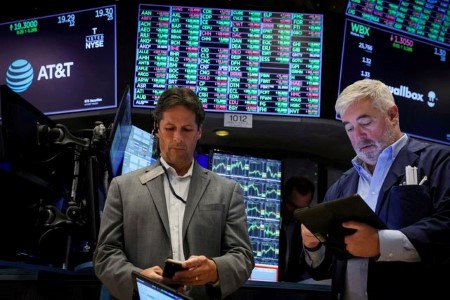The dollar fell to a more than one-year low against the euro and sterling on Wednesday after data showed employers added 818,000 fewer jobs in the year to March 2024 than previously thought.
The data was released later than its scheduled 1000 EDT time, leading to market confusion and some choppy trading.
“It suggests the labor market was not as strong as the Fed believed at the time and has been communicating. But it’s less clear what it means for the outlook going forward,” said Vassili Serebriakov, an FX strategist at UBS in New York.
“This is very consistent with the Fed starting to cut rates. But it’s harder to say what it means for the pace of easing and other details,” he added.
Traders will focus on comments by Fed Chair Jerome Powell on Friday at the Kansas City Fed’s Jackson Hole economic symposium for any new clues on his view of the labor market and whether he references Wednesday’s data.
Markets in particular are looking for clarity on the likely size of a rate cut next month, and whether borrowing costs are likely to be lowered at each subsequent Fed meeting.
Traders are pricing in a 33% probability of a 50 basis point cut, little changed from before the jobs data, and a 67% chance of a 25 basis point reduction, according to the CME Group’s FedWatch Tool.
“It got easier for the Fed to cut rates now and through year-end but I don’t think it makes a strong case for 50 basis points,” said Adam Button, chief currency analyst at ForexLive in Toronto.
“We know that it was a year of solid economic growth, that company profits were fine, and that the economy grew at a good clip for the year ending in March,” Button said.
Fewer-than-expected job gains in July and an unexpected increase in the unemployment rate led traders to price for larger rate cuts on concern the United States is facing an imminent recession.
Those concerns were rowed back by better data, including a strong retail sales report for July and also higher-than-expected shelter inflation for the month.
But markets remain highly sensitive to jobs data for any new signs that the economy is worsening at a quicker pace.
The Fed is due to release the minutes from its July 30-31 meeting on Wednesday.
August employment and inflation data will be released after Powell’s speech but before the September meeting.
The dollar index was last down 0.16% at 101.22, the lowest since Dec. 29. The euro rose 0.11% to USD 1.1142, the highest since July 2023.
Strength in the euro may be stretched after the recent rally, said UBS’ Serebriakov.
“You haven’t seen a big move in US rates. I don’t think the European data is especially positive for the euro. So, it seems still a bit of a technical move in FX,” he said.
Sterling strengthened 0.36% to USD 1.3076, also the highest since July 2023.
The dollar weakened 0.05% to 145.18 Japanese yen, the lowest since August 7.
Bank of Japan Governor Kazuo Ueda is expected to discuss the central bank’s decision last month to raise interest rates when he appears in parliament on Friday.
The Bank of Japan will raise interest rates again by year-end, according to more than half the economists in a Reuters poll published on Wednesday, with those who had a view on which month leaning towards a December increase.
Data next week is expected to show Japan’s consumer inflation rate picked up in July for a third consecutive month, a Reuters poll of 18 economists showed.
In cryptocurrencies, bitcoin rose 0.31% to USD 59,498.
(Reporting By Karen Brettell; Editing by Sharon Singleton and Nick Zieminski)







 DOWNLOAD
DOWNLOAD













